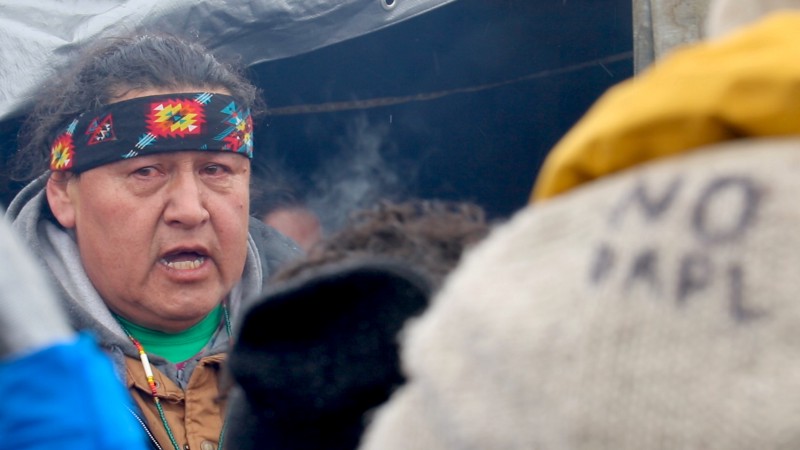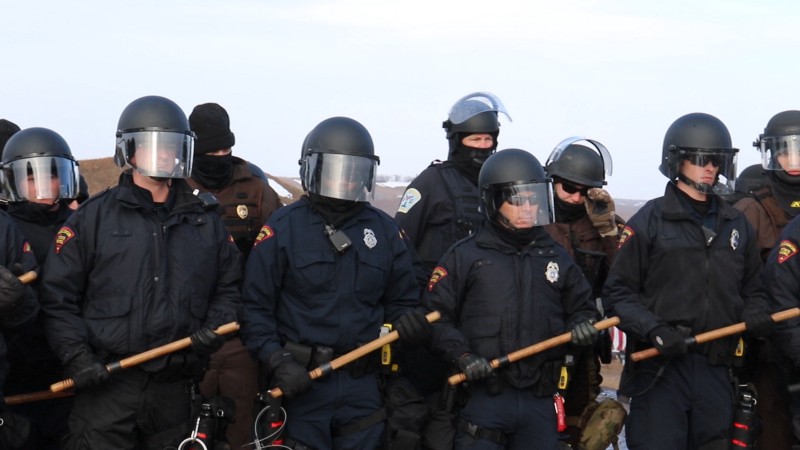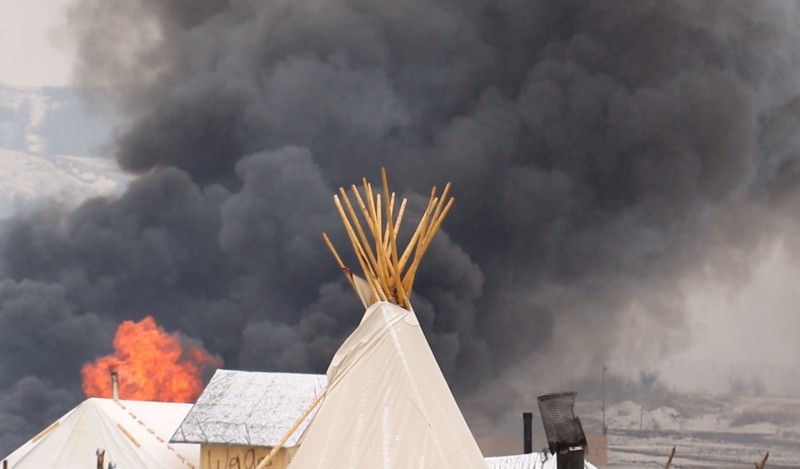This story is part of a series about Standing Rock, North Dakota — the contested pipeline and the people resisting its construction. Nexus Media is highlighting voices from the protests unfolding along the Missouri River.
Authorities have shut down a camp near the Standing Rock Indian Reservation that demonstrators have made their home since August. The Army Corps of Engineers said the camp needed to be evacuated before snow melts, flooding the land and sending accumulated debris into nearby waterways.
Once home to thousands of protestors, the site hosted just 200 self-described “water protectors” in its final weeks. Most left voluntarily before Wednesday’s 2 pm deadline. The state offered bus tickets, hotel vouchers, and meal vouchers to those who peacefully vacated the site. National Guardsmen and police in riot gear arrested dozens that remained, the AP reported.
“This is not the government’s land. This is our land. This is treaty land,” said Raymond Kingfisher of the Northern Cheyenne Tribe, as demonstrators prepared to evacuate. “This is why we’re still here to the very last second.”

Protestors contend that the planned $3.8 billion Dakota Access pipeline threatens to contaminate the sole source of water for the Standing Rock Sioux. The pipeline will cross the Missouri River just upstream of the Standing Rock Indian Reservation, as it wends its way more than 1,100 miles from North Dakota’s oil fields to a refinery in Illinois.
In December, the Army Corps of Engineers halted the project, promising to conduct an environmental review and study possible alternate routes. Shortly after taking office, Donald Trump signed an executive order calling for approval of the pipeline, which the Army Corps of Engineers granted earlier this month.

Until recently, Trump owned stock in the company building the pipeline — Energy Transfer Partners. The firm’s CEO, Kelcy Warren, donated $100,000 to the Trump Victory Fund.
Demonstrations against the controversial pipeline have earned the support of environmentalists, military veterans and more than 100 Native American tribes. As water protectors at Standing Rock faced down tear gas and rubber bullets, protestors took to the streets in dozens of cities across the country in a show of solidarity. Recently, Seattle, WA and Davis, CA joined the opposition by divesting from Wells Fargo, one of the banks backing construction of the Dakota Access Pipeline. Activists are pushing Los Angeles to do the same.

Lawyers representing the project say it could come online as early as next month, but it’s profitability remains in question. A recent report from the Institute for Energy Economics and Financial Analysis notes that low oil prices have led to a downturn in oil production, which could render the Dakota Access project redundant with existing pipeline infrastructure.
The Cheyenne River Sioux Tribe — which, like the Standing Rock Sioux, rely on the Missouri River for clean water — are still pushing to block the project, arguing that it threatens to contaminate water used in religious ceremonies. They will present their case to a district court next week.
Nexus Media is a syndicated newswire covering climate, energy, policy, art and culture. You can follow us at @NexusMediaNews.


